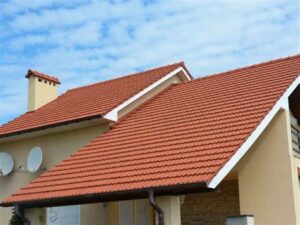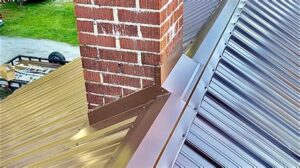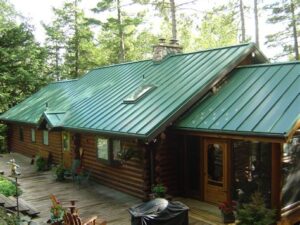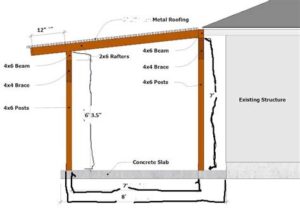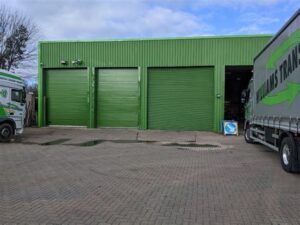Are you considering a metal roof for your home? While they are known for their durability and aesthetic appeal, understanding the pros and cons of metal roofs maintenance is crucial for making an informed decision. This article will guide you through everything you need to know about metal roofs, exploring their key benefits and drawbacks. We’ll delve into the essential aspects of maintenance, common issues that arise, and effective strategies to prolong the lifespan of your metal roof. Additionally, we’ll provide a cost-benefit analysis to help you evaluate whether investing in a metal roof is the right choice for you. Whether you’re a homeowner, builder, or simply curious, this comprehensive overview will equip you with the knowledge necessary to navigate the world of metal roofs confidently.
Understanding Metal Roofs: Key Benefits and Drawbacks
Metal roofs have gained immense popularity in recent years, thanks to their durability and aesthetic appeal. However, like any building material, they come with both advantages and disadvantages that homeowners should consider. Here, we explore the key benefits and drawbacks of metal roofs to help you make an informed decision.
Benefits of Metal Roofs
- Longevity: Metal roofs can last 40-70 years depending on the type of metal used, significantly outlasting traditional asphalt shingles which typically require replacement every 15-20 years.
- Durability: They are highly resistant to extreme weather conditions, including heavy rain, high winds, and snow accumulation, making them an excellent choice for various climates.
- Energy Efficiency: Metal roofs reflect solar radiant heat, which can help reduce cooling costs during summer months.
- Low Maintenance: Once installed, metal roofs require less maintenance compared to other roofing materials, contributing to long-term cost savings.
- Environmentally Friendly: Many metal roofs are made from recycled materials and are themselves recyclable at the end of their life cycle.
Drawbacks of Metal Roofs
- Cost: The upfront cost of metal roofing materials and installation can be higher than traditional roofing systems, which may deter some homeowners.
- Noise: Metal roofs can be noisier during heavy rain or hail unless insulation is installed to reduce sound.
- Expansion and Contraction: Metal roofs can expand and contract with temperature fluctuations, which may lead to fasteners becoming loose if not installed properly.
- Limited Styles: While there are many styles available, metal roofs may not offer the same aesthetic versatility as other materials, such as shingles or tiles.
Understanding both the benefits and drawbacks of metal roofs is essential for homeowners considering this roofing option. Weighing these factors against your specific needs and budget will guide you in selecting the most suitable roof for your home.
Everything You Should Know About Metal Roofs Maintenance
Maintaining metal roofs is crucial for ensuring their longevity and performance. Unlike traditional roofing materials, metal roofs require specific care and attention to keep them in optimal condition. Here’s what you should know:
Regular Inspections are a fundamental aspect of proper maintenance. It’s recommended to inspect your metal roof at least twice a year, particularly after severe weather events. This helps identify any potential issues before they escalate into costly repairs.
Cleaning is essential to prevent the buildup of dirt, debris, and rust. Regular cleaning not only enhances the appearance of your roof but also helps to maintain its protective coatings. Carefully remove any leaves, branches, or other debris that may accumulate in valleys or gutters.
Another critical factor is addressing Rust and Corrosion. Even though many metal roofs come with protective coatings, they can still develop rust spots over time. Promptly treating any signs of rust can prevent further damage. Use a wire brush to scrub off rust, then follow up with a rust-inhibiting primer and paint to seal the affected areas.
Pay attention to the fasteners and seams. Regularly check that all fasteners are properly tightened and that there are no gaps or leaks at seams. If you notice any loose fasteners, tighten them immediately. Seams should also be sealed to prevent water infiltration.
Ensure that insulation and ventilation are adequate. Good ventilation helps to regulate roof temperature and moisture levels, which can mitigate the risk of issues like condensation and ice dams. Proper insulation can also improve energy efficiency.
It’s also wise to keep trees and vegetation trimmed. Overhanging branches can scratch the roof’s surface, and leaves can trap moisture, leading to faster deterioration.
Consider hiring a professional for major repairs or maintenance. While DIY maintenance is commendable, some tasks require specialized knowledge and tools. Engaging a professional can save you time and ensure that the maintenance tasks are performed correctly.
By taking these steps, you’ll not only maintain your metal roof effectively but also enhance its lifespan, ensuring it continues to protect your home for many years to come.
Common Issues Faced During Metal Roof Maintenance
While metal roofs are known for their durability and low maintenance requirements, certain issues may arise during their upkeep. Understanding these challenges can help homeowners be proactive and ensure the longevity of their roofs. Here are some of the most common issues faced during metal roof maintenance:
- Rust and Corrosion: Despite their reputation, metal roofs can develop rust if the protective coating is damaged or compromised. Regular inspections and timely touch-ups are crucial to prevent deterioration.
- Loose Fasteners: Over time, fasteners can become loose due to temperature fluctuations or weather conditions. It is essential to check and tighten them periodically to avoid leaks and structural damage.
- Water Accumulation: Improper drainage can lead to water pooling on the roof surface, causing sagging and potential leaks. Gutters and downspouts should be cleaned regularly to ensure effective water flow.
- Punctures and Dents: Falling debris can create punctures or dents in metal roofing panels. Inspect for any signs of damage and address them quickly to maintain the roof’s integrity.
- Thermal Expansion: Metal expands and contracts with temperature changes, which can lead to joint separation or gaps if not accounted for. Proper installation techniques help mitigate this issue.
- Flashing Issues: Flashing installations around chimneys, vents, and roof edges can develop issues, including improper sealing or warping, potentially leading to leaks. Regular inspections are necessary to ensure these areas are in good condition.
Staying vigilant about these common metal roof maintenance issues can help homeowners save on costly repairs and maintain the roof’s lifespan. Remember, addressing problems as they arise is key to ensuring that your metal roof continues to perform effectively for years to come.
Effective Strategies for Prolonging Your Metal Roof Lifespan
Maintaining the longevity of your metal roof requires a proactive approach and consistent care. Here are some effective strategies to help ensure that your roof remains in excellent condition for years to come:
- Regular Inspections: Conduct regular inspections, at least twice a year, to identify any potential issues early. Look for signs of rust, loose panels, or damaged flashing.
- Proper Cleaning: Clean debris such as leaves, twigs, and dirt off your roof to prevent corrosion and ensure proper water drainage. Use a soft broom or a blower, avoiding harsh chemicals that could damage the surface.
- Examine for Rust: Check for rust and treat it immediately with appropriate rust-inhibiting products to prevent it from spreading.
- Sealants and Coatings: Apply protective sealants or roof coatings every few years. These can provide an additional layer of protection against UV rays, water infiltration, and temperature fluctuations.
- Address Leaks Promptly: If you detect any leaks, tackle them immediately to prevent further damage to the roof and the underlying structure. Use suitable sealants or call in a professional if necessary.
- Optimize Drainage: Ensure that your gutters and drainage systems are unobstructed and functional to avoid water pooling, which can lead to corrosion and structural issues.
- Consider Professional Maintenance: Schedule regular maintenance with a roofing professional who specializes in metal roofs to catch any potential issues you might miss.
By implementing these strategies, you can significantly extend the lifespan of your metal roof, allowing you to enjoy its benefits while minimizing long-term maintenance costs. Remember, the key to effective metal roof maintenance is consistency and attention to detail.
The Cost-Benefit Analysis of Metal Roofs Maintenance
When considering roofing options, a thorough analysis of the costs and benefits associated with everything you need for metal roofs maintenance is essential. While the initial investment in a metal roof may be higher than traditional shingles or tiles, the long-term savings and advantages can often outweigh these upfront costs.
| Cost Factors | Benefit Factors |
|---|---|
| Initial Installation Costs | Long Lifespan (up to 50+ years) |
| Periodic Maintenance Requirements | Low Maintenance Costs over Time |
| Insurance Premium Adjustments | Energy Efficiency Savings |
| Potential Repair Costs for Dents/Scratches | Increased Home Value |
The table above outlines key elements to consider when evaluating the costs versus the benefits of maintaining a metal roof. The long lifespan and durability of metal roofs mean that you’re likely to incur fewer repairs and replacements over the years, thereby minimizing overall spending.
Additionally, many homeowners find that metal roofs can provide energy savings, thanks to their reflective properties which reduce heat absorption. This can lead to lower cooling costs, particularly in warmer climates, further enhancing the financial appeal of choosing a metal roof.
While the initial costs of metal roofs maintenance may seem daunting, the long-term benefits make it a wise investment for many homeowners. Assessing both sides comprehensively will help you understand why metal roofs can be a beneficial choice in the long run, leading to significant savings and increased property value. This thorough consideration is vital for anyone looking to make the best roofing decision possible.
Frequently Asked Questions
What are the main advantages of metal roofs?
Metal roofs are durable, lightweight, energy-efficient, and can last up to 50 years or longer with proper maintenance.
What are some disadvantages of metal roofs?
Some disadvantages include higher upfront costs, noise during rain or hail, and potential expansion and contraction that can lead to leaks if not properly installed.
What type of maintenance do metal roofs require?
Metal roofs require periodic inspections, cleaning to remove debris, and checking for rust or corrosion to ensure their longevity.
How does weather affect metal roofs?
Metal roofs can withstand extreme weather conditions, but heavy snow or ice can pose a risk of weight accumulation, and they may require additional insulation in colder climates.
Can metal roofs be installed over existing shingles?
Yes, many metal roofs can be installed over existing shingles, which can save on labor and disposal costs.
What are some popular styles of metal roofing?
Popular styles include standing seam, corrugated panels, and metal shingles, each offering different aesthetics and benefits.
Are metal roofs energy-efficient?
Yes, metal roofs reflect solar radiant heat, which can reduce energy costs, especially in warmer climates.

